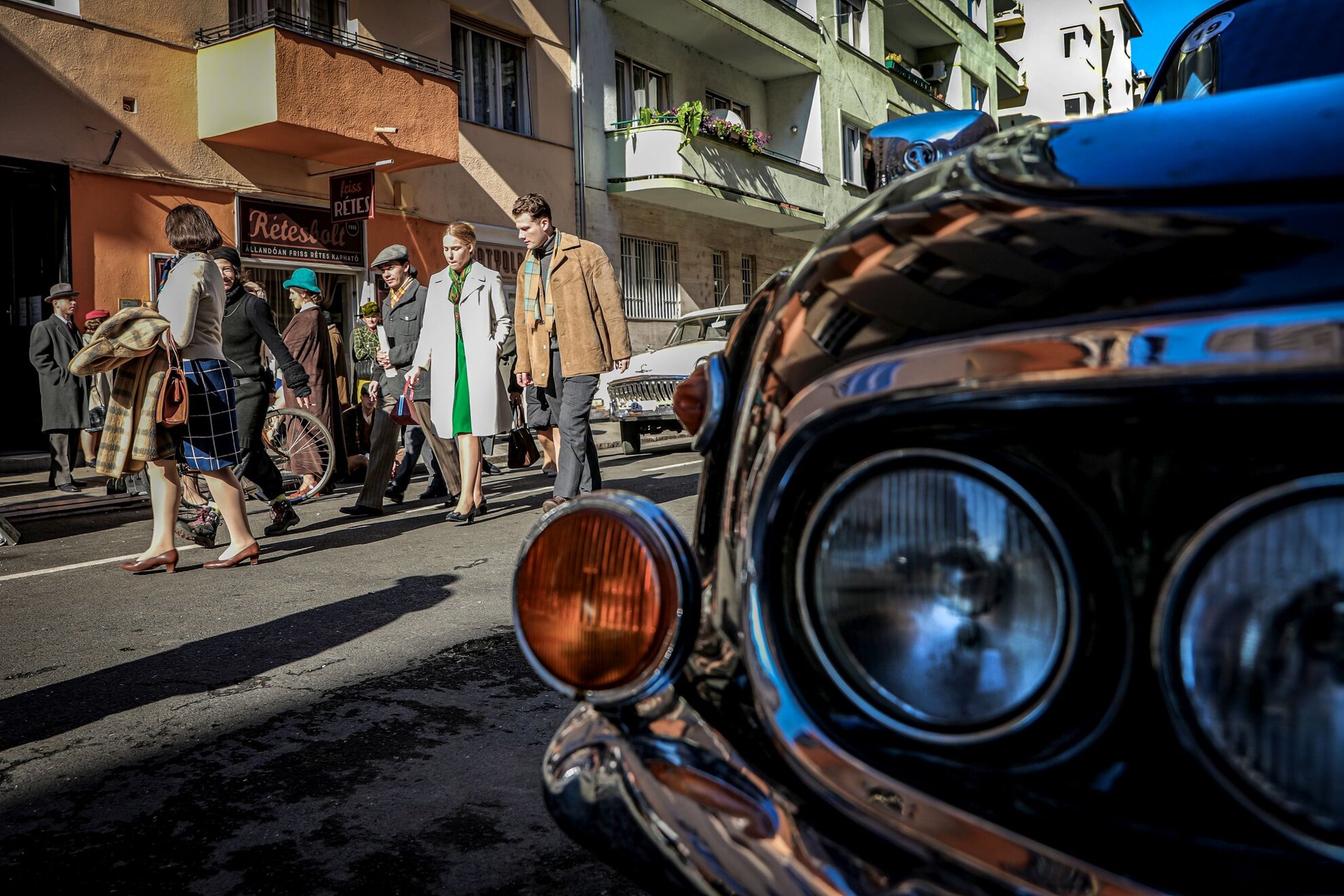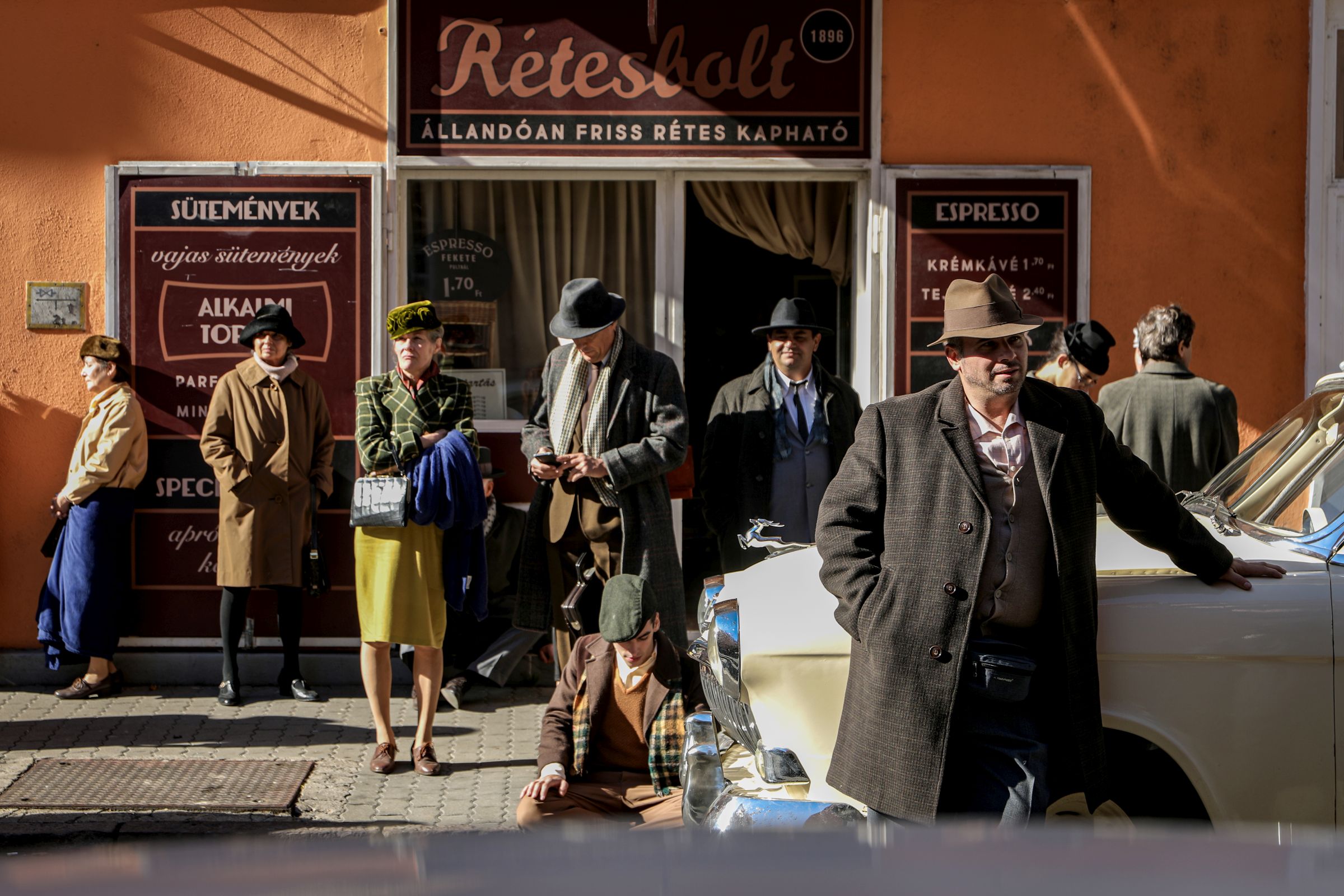
Due out in Hungarian cinemas this time
next year, A játszma (‘The Game’) is the sequel to the 2011 Hungarian thriller A
vizsga (‘The Exam’), which takes place in Budapest in 1957, the year after the
failed Hungarian Uprising. Its plot follows unscrupulous State agents serving
the oppressive Soviet régime, deceiving themselves and each other at the same
time.
To maintain control, the Party leadership creates a test to assess agents’
loyalty, without them knowing about it.
This is what made A vizsga so thrilling
– the viewer could not pinpoint the characters' aims and motivations, whose side they were
on, and who they were going to betray. A játszma follows up these events seven
years later, in 1964.

Back then Újlipótváros, north Pest, was just another neglected Budapest neighbourhood steeped in faded grandeur. Stylish and bustling before the war, it had lost many of its Jewish residents, a ghostly sheen falling over the elegant façades fashioned in the 1920s. Today, it’s as trendy as can be, but its choice as a location for a film set in 1964 is fitting.

Life in Hungary had become a lot easier by 1964. The years of post-56 retaliation and consolidation were over, and the harsh authority of the Hungarian Communist régime started softening up under the leadership of János Kádár.

In the film, once powerful comrade Markó, played by prominent Hungarian actor János Kulka, has been expelled from the Party and has everything taken away from him. Suffering an illness and recovering after a stroke, he is disregarded and cast aside.

Comrade Kulcsár (Péter Scherer), Comrade
Jung (Zsolt Nagy) and Comrade Gáti (Gabriella Hámori) are influential Party
members. The three of them are great rivals, but their petty power struggles are
interrupted by the surprise reappearance of Markó, who turns his former
partners against one another.
Whether this is an act of revenge or something
else, is yet to be discovered. Screenwriter Norbert Köbli wouldn’t give
anything away – no spoiler alerts here. We’ll all have to wait until next
autumn.

Though it wasn’t his first project, Köbli’s
screenwriting career shot up with A vizsga in 2011. Then he quickly started
receiving better and better opportunities, such as A berni követ (‘The Ambassador
to Bern’), Félvilág (‘Demi-monde’) and, most recently, Apró mesék (‘Tall Tales’).
These films share a notable common feature: they all focus on the recent past
of the country or the region. Köbli has a personal interest in the era, the
period distant enough for us to have a clear understanding of it, yet
encompassing stories with themes and ideas that are relevant for society today.

When visiting a film set depicting the recent past, a past that isn’t quite yours, every single object and detail you see has a certain magic. Everything looks different, from the clothes to the street signs, cars, phone booths and newsstands. The effect is even greater when it’s located somewhere you’re very familiar with, and often see in its present-day form.

For this film, Tátra utca in
Újlipótváros, near Margaret Island, was reconstructed
for a day to reflect the atmosphere of the 1960s. What you may have only seen
in old photographs and on TV is all around you as enhanced reality.
For this
writer, setting eyes on the cool, vintage-looking phone boxes made me want to
ring up my grandparents who would have been middle-aged at that time, and ask
them to put my Mum, who would have still just been a teenager, on the phone. This
was genuine time travel, made possible thanks to set designer Petra Vinnai and
costume designer Tünde Kemenesi.
As Petra told us, the entire staff is involved
in doing whatever they can to recreate this era in the most authentic way
possible.

One of the biggest issues was finding the right costumes. There are lots of
extras walking in and out of the scene in addition to the main actors, all of
whom have to be dressed according to the customs of the time.
Tünde explains
that it is quite difficult to source this amount of old clothes from around
Hungary, so much of it actually came from Spain, and – due to the pandemic –
was ordered online. These wrangles, however, don’t seem to be reflected in the
finished look at all.

Getting the scenery right was not nearly
as difficult, as there’s a great number of old cars, bicycles, trucks,
ambulances and motorcycles with sidecars to be found around Hungary. The
billboards, phone booths and newsstands were recreated based on old
photographs. Here and there, original items and relics from the past appear,
too.
Petra reveals that when creating the Budapest of 1964, they didn’t fully go
along with the sample pictures, but made a sort of an idealised version of this
time, something that today’s audiences could identify with more. As I looked
around the set, there was nothing that would have given me this impression
– it all looked very real, as if the past were suddenly brought into the
present.

Filming began in September and is expected to last until the end of November, to be followed by editing and post-production. With such high standards to maintain in the Hungarian film industry, there’s still a lot to do before the film appears on cinema screens.




